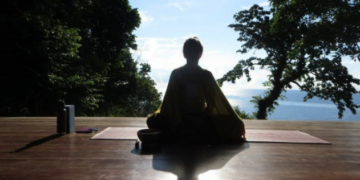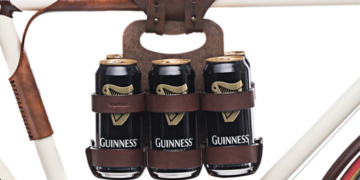Meet Sam Accardi, a passionate cyclist who embodies the spirit of adventure on two wheels. With countless rides under his belt and the thrill of racing coursing through his veins, Sam knows cycling inside and out. But it’s not just about speed; it’s also about navigating the bumps along the way literally! As exhilarating as cycling can be, it comes with its fair share of injuries that every rider should be aware of. From knee pain to muscle strains, understanding how to treat these common issues is crucial for any enthusiast. And let’s not forget about post-ride recovery rituals that often include a cold beer or two. It raises an interesting question: Can bikes and beers coexist in a cyclist’s life? Let’s delve into this dynamic world where passion meets precaution and learn how to keep those wheels spinning smoothly!
Table of Contents
Common injuries faced by cyclists
Cycling is exhilarating, but it comes with its own set of risks. Many cyclists encounter common injuries that can sideline their passion.
Knee pain tops the list. This discomfort often stems from improper pedaling techniques or a poorly fitted bike. It can turn a joyful ride into a painful experience.
Next up is back pain, which plagues many riders. Extended hours hunched over handlebars may lead to strained muscles and spinal issues. Stretching and core exercises are essential for prevention.
Muscle strains also make frequent appearances among cyclists. Whether from sudden movements or overexertion, these injuries can disrupt training plans.
Falls are always a possibility on two wheels. They can result in scrapes, bruises, or worse serious fractures.
Awareness of these potential injuries helps riders stay prepared and proactive in their cycling journey.
Importance of proper bike fit and maintenance in preventing injuries
A proper bike fit is crucial for any cyclist. It ensures that you ride comfortably and efficiently, minimizing unnecessary strain on your body. When a bike is correctly adjusted to your height and riding style, it can significantly reduce the risk of injury.
Regular maintenance plays an equally important role. Keeping components like brakes and gears in optimal condition prevents mishaps during rides that could lead to falls or accidents.
Pay attention to tire pressure as well; under-inflated tires can cause discomfort and instability, affecting your posture on the bike.
Don’t overlook minor adjustments either. A simple tweak in saddle height or handlebar position can make a world of difference in how you feel after long rides. Prioritizing both fit and upkeep creates a safer cycling experience, allowing you to focus more on enjoying the ride rather than worrying about potential injuries.
The role of nutrition and hydration in injury prevention
Nutrition and hydration play pivotal roles in preventing injuries for cyclists like Sam Accardi. A well-balanced diet fuels the body, allowing it to withstand long rides and strenuous climbs.
Carbohydrates provide energy, while proteins repair muscles post-ride. Healthy fats are essential too; they support joint health and overall endurance.
Hydration is equally critical. Dehydration can lead to muscle cramps and fatigue, increasing the risk of injury. Drinking water before, during, and after cycling ensures that your body stays primed for action.
Electrolytes also matter. They help maintain fluid balance and nerve function—key factors when pedaling hard over varied terrain.
Cyclists should focus on whole foods rich in vitamins and minerals to boost recovery as well. These nutrients aid healing processes, keeping injuries at bay while enhancing performance on the bike.
Tips for treating common cycling injuries, including knee pain, back pain, and muscle strains
Knee pain is a common concern for cyclists. Start by resting the affected knee and applying ice to reduce swelling. Stretching before and after rides can also help alleviate discomfort.
Back pain often stems from poor posture on the bike. Consider gentle stretching or yoga to improve flexibility. Strengthening your core muscles can provide better support during long rides.
Muscle strains may require immediate attention. Rest is essential, but don’t forget about light stretching as you heal. Gradually reintroduce movement while listening to your body.
Proper footwear plays an important role too; ensure your shoes provide adequate support and fit well for optimal performance.
Consider consulting a physical therapist if injuries persist. They can offer personalized exercises tailored for recovery and future injury prevention, keeping you on track with your cycling goals.
The benefits of incorporating beer into a cyclist’s recovery routine
Cyclists often push their bodies to the limit. After an intense ride, recovery is essential. Surprisingly, beer can play a role in this process.
Craft beers contain carbohydrates that replenish glycogen stores lost during cycling. This helps restore energy more quickly than some sports drinks.
Moreover, moderate consumption of beer has been linked to reduced inflammation. The hops and yeast used in brewing have natural anti-inflammatory properties that may aid muscle recovery.
Then there’s the social aspect of enjoying a cold one with fellow cyclists after a long ride. Sharing stories and laughter fosters camaraderie, which can enhance mental well-being—a crucial part of recovery too.
Just remember moderation is key. A couple of beers can be beneficial, but overindulgence might lead to setbacks instead of gains on your next ride.
Conclusion
Cycling is an exhilarating sport, and for enthusiasts like Sam Accardi, it becomes a way of life. However, the thrill can come with its fair share of challenges. Understanding common injuries faced by cyclists helps riders stay informed and prepared. A proper bike fit is essential to prevent issues related to posture and alignment.
Understanding these aspects not only enhances your cycling experience but also fosters longevity in this rewarding sport. Whether you’re hitting the trails or just enjoying time spent on two wheels with friends, being proactive about injury prevention is key.































